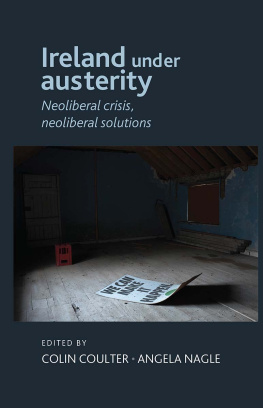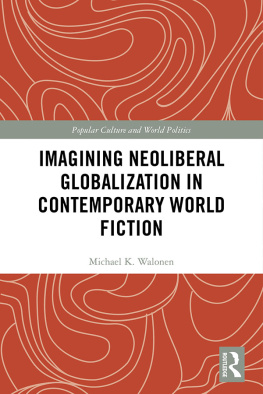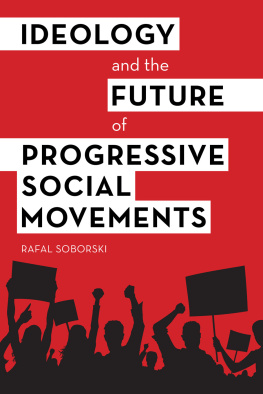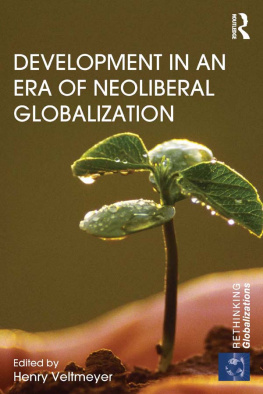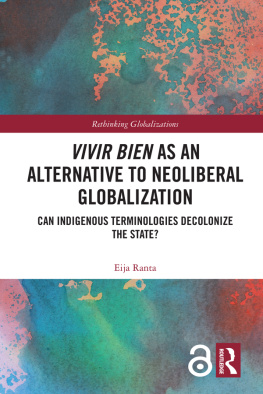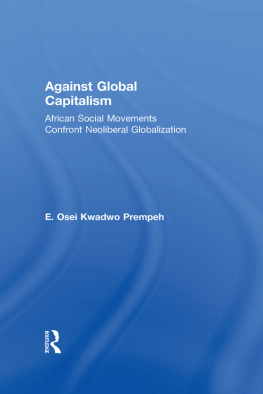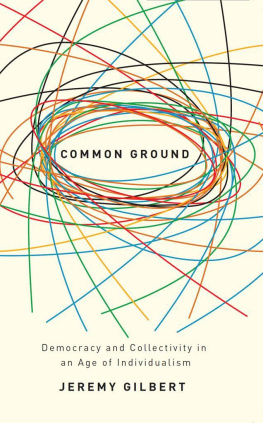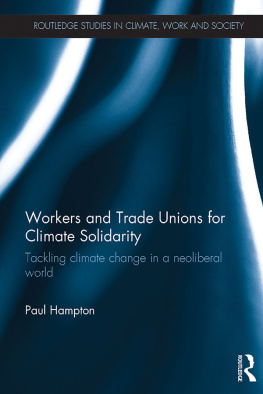For distributor details and how to order please visit the Ordering section on our website.
All rights reserved. Except for brief quotations in critical articles or reviews, no part of this book may be reproduced in any manner without prior written permission from the publishers.
The rights of Marc James Lger as author have been asserted in accordance with the Copyright, Designs and Patents Act 1988.
A CIP catalogue record for this book is available from the British Library.
We operate a distinctive and ethical publishing philosophy in all areas of our business, from our global network of authors to production and worldwide distribution.
Acknowledgements
Most of the essays in this book were written between the years 2009 and 2011. I would especially like to thank those individuals who created opportunities for me to present my work, or who helped me sharpen some of the ideas and writing, in particular, Izida Zorde, the Critical Social Research Collaborative at Carleton University, Isabelle Lelarge, Richard Martel, Richard Dyer and Yvie Andrews, Carole Cond and Karl Beveridge, Jackie Sumell and Herman Wallace, Karen van Meenen and Lucia Sommer, Pierre Allard and ATSA, Katy Siegel, Montreals Convergence des luttes anti-capitalistes (CLAC), Stevphen Shukaitis, Jeff Shantz, Imre Szeman, and Gerald Raunig. Rosika Desnoyers readings of these essays and my frequent conversations with her helped me to better articulate many of my concerns.
Thanks to all of the artists and cultural institutions that gave me permissions to publish images of artwork and to reprint versions of those essays that have appeared previously. Art World as Zombie Culture was first presented in the context of the panel The Neoliberal Undead: First as Tragedy, Then as Farce, organized by Bruce Barber and myself for the Universities Art Association of Canada Annual Conference, Guelph University, October 2010. Parts of the latter were published in Whose Excellence? Our Excellence! Fuse 33:3 (Summer 2010) 24-26. Culture and the Communist Turn was presented at the Varieties of Socialism, Varieties of Approaches conference at Carleton University, March 5, 2011. Alterglobal Allegory: Cond and Beveridge Against the Commodification of Water, was published in French in Inter #107 (Winter 2011) 46-50. By Any Means Necessary: From the Revolutionary Art of Emory Douglas to the Art Activism of Jackie Sumell was published in Afterimage 38:5 (March/April 2011) 8-14 (See www.vsw.org/ai.). Afterthoughts on Engaged Art Practice: ATSA and the State of Emergency, was published in Art Journal 70:2 (Summer 2011) 50-65. The Non-Productive Role of the Artist: The Creative Industries in Canada was published in Third Text 24:5 (September 2010) 50-65. Protesting Degree Zero: On Black Bloc Tactics, Culture and Building the Movement, was first presented on the InterActivist Info Exchange website (November 16, 2010) and subsequently included in Jeff Shantzs edited anthology Protest and Punishment. The Qubec Maple Spring, the Red Square and After was presented on the website of the European Institute for Progressive Cultural Policy in October 2012.
Some mention should be made also of the people who are involved in the radical reshaping of contemporary art discourse and with whom I have had the pleasure of working or discussing. Among them are Brian Holmes, Gregory Sholette, Jennifer Gradecki, Michael Blum and Barbara Clausen, Oliver Ressler, David Tomas, Claude Lacroix as well as Jason Jones, Beka Economopulos and Jodi Dean at Not An Alternative. Special thanks go to Tariq Goddard and John Hunt at Zero Books, and Marc Herbst at the Journal of Aesthetics and Protest. For financial assistance I wish to acknowledge the Government of Qubec. Superlatives are reserved for Cayley Sorochan, champion of ideology critique, and special dedications go to my father, Thomas Lger, who taught me how to spot a zombie.
Introduction
Marc Herbst
Institutional critique is conservative; its function is either as house-cleaning or as rearguard action. Instead, Marc Lgers work appears energized by its continuing commitment to keep central the potential to create change with art as one tool. Radical writing is done at the point where criticized institutions meet (facilitate and/or negate) the potentials for artwork. Marc Lgers work hangs out at this spot.
To many, revolution has a relationship to art and its institutions. In that relationship, the institution is secondary and appears as tertiary. Few culture-rads tune their dials to the music of the non-profit board. Instead, they choose to vibe with the art and music. But no matter, when the music fades and the art is taken down, it is the institution that remains. That is what institutions do.
Much contemporary writing tends to ignore this. Instead, it is often hung up on the singular artists. I like Marc James Lgers work because he understands this and suffers no delusions for art.
Revolution year zero only exists within an exhibition. To know this is important.
Many assume that each work of art is singular, an isolated existential phenomenon. Many encounter political artwork as a radical island that formed from the viewers discovery. But there is no revolution year zero. Instead, waves of to-be-formed revolutionaries wash through and encounter both ancient and new archipelagos of institutions whose bedrock is formed from sedimented compositions, common knowledges, and collective procedures. Between palm trees, the islands bookshelves are stuffed with new and old books, posters, images, culture, landscapes, architectures, holidays, songs, sculptures, stories, laws. These bookshelves are open and their contents can be carried away. It is for the young and newly radical to make something of this detritus, however they find it. However, the common knowledge, collective procedures, and compositions are held more tightly.
Knowing this, some of Lgers keenest critiques are held out for relational aesthetics and social practice. He describes these trends as being thin deep and a mile wide. Though the Journal of Aesthetics & Protest (which I co-edit) has published several of his critical essays on these topics, his work managed to make us sweat under our colours.
At its inception, our magazine rallied against those who would complicate our ideal of the artist as revolutionary by, among other things, bringing boring questions about museum and gallery art into the picture. For my part, as an editor, I built my perspective on 90s counterculture. I dug through the trash at the Kinkos on Houston Street to claim the discards from Seth Tobacman and Eric Drookers zine-making forays. Based on such discards, I assumed that there would be both a residue of freedom-from-work and a how-to-manual for an artistic revolution. I dug the 90s for what it could distinctly offer. Imagine now that thin post-Cold War moment with digital technology and counter-historic cultures ungentrified neighborhoods: pirate radio, video freaks, tech hackers, community gardens, and the anarchist bookstore projects that a decade later would be re-created as social practice and relational aesthetics.


